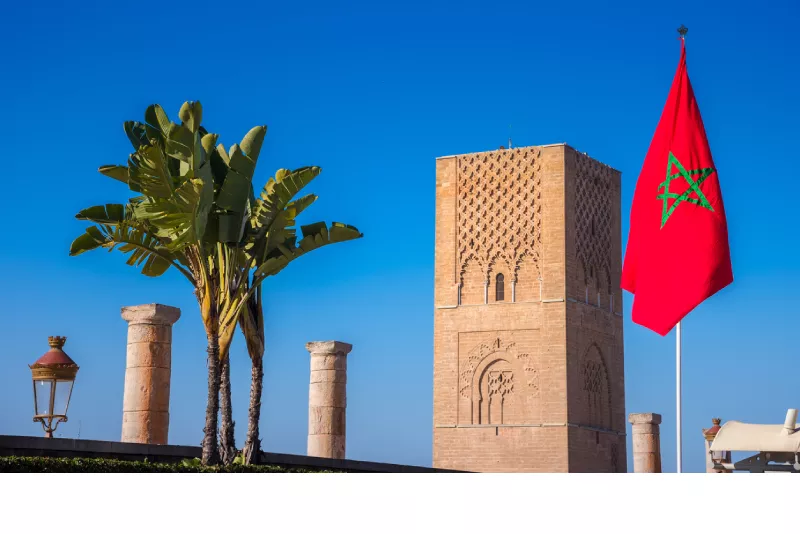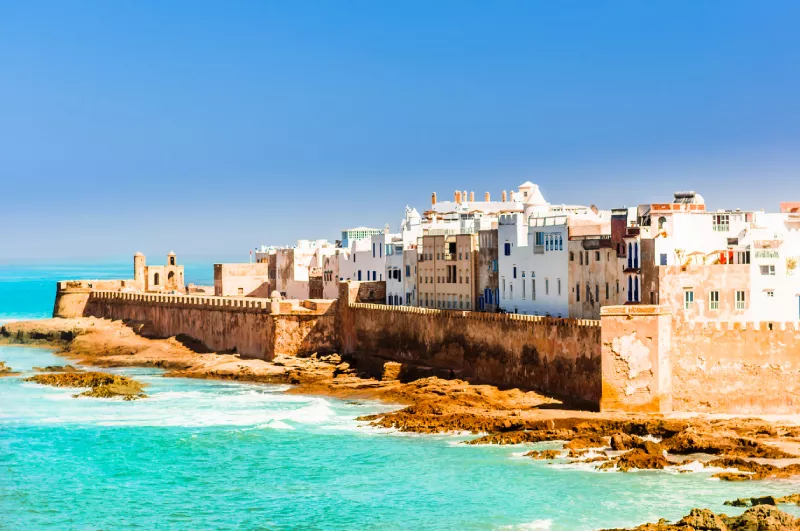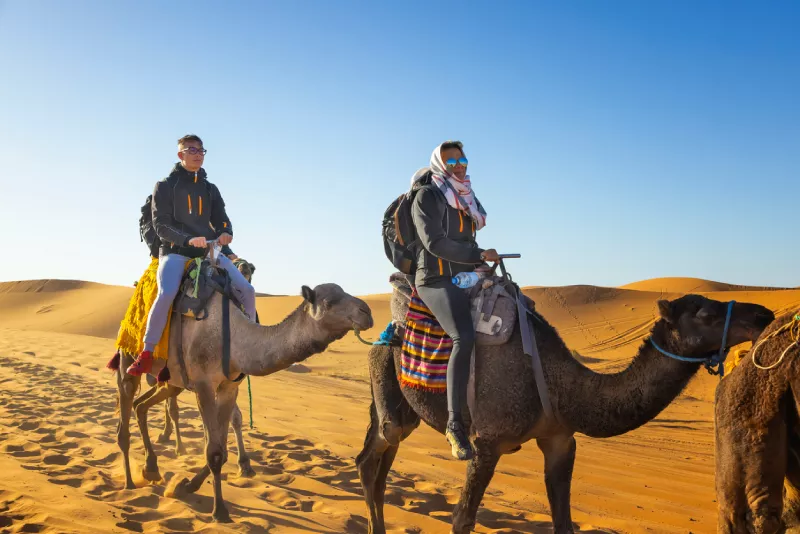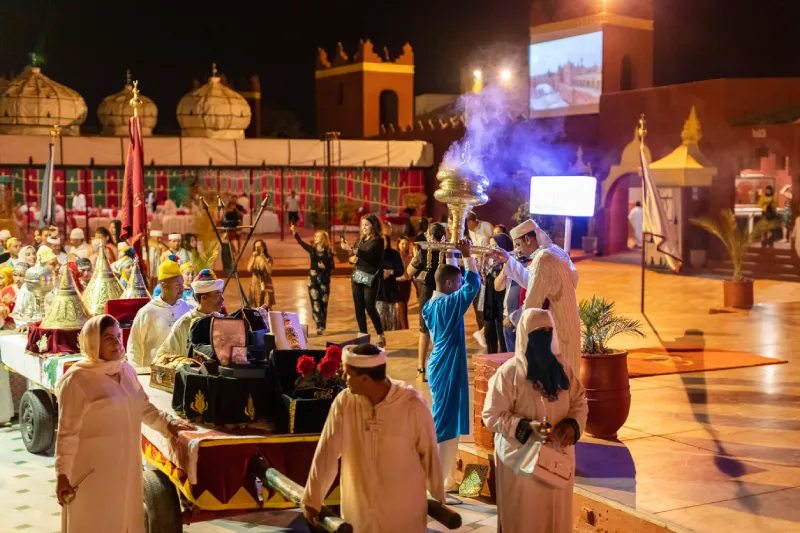Memphis Tours Blogs
Best Time to Visit Morocco: A Local's Month-by-Month Secret Guide

The best time to visit Morocco depends on what you want to experience. Spring (March to May) and autumn (September to November) offer pleasant temperatures, making them ideal for exploring cities like Marrakech and Fez or trekking in the Atlas Mountains. Summer can be hot, especially in the Sahara, but it's perfect for coastal destinations like Essaouira. Winter is cooler, with snow in the mountains and mild weather in the south. Whether you're looking for cultural festivals, desert adventures, or beach relaxation, Morocco has something to offer year-round.

Morocco's weather changes dramatically based on where you go, and temperatures can range from a mild 15°C to a blazing 40°C throughout the year. The most pleasant times to visit are spring (mid-March to May) and fall (September to October).
The coastal areas stay comfortable year-round with mild winters and summers hovering around the mid-20°Cs. September is one of the best times to visit Morocco because the weather is perfect and tourist crowds are smaller. This makes it great for both beach trips and desert adventures. You can also plan your trip around some amazing cultural events. The Festival of Roses lights up Morocco in May, while the traditional Imilchil Marriage Festival in September gives you a real taste of Moroccan culture.

Understanding Morocco's Distinct Seasons
Morocco has four distinct seasons that shape its diverse landscapes. Note that the country's climate changes by a lot between the coast and inland areas.
Spring: March to May
Spring temperatures stay mild, ranging from 10°C to 20°C in March. On top of that, it brings blooming flowers and green vegetation thanks to winter rainfall. April sees warmer weather, and May temperatures can climb to 28°C in cities like Marrakech.

Summer: June to August
Each region experiences different summer temperatures. The coastal cities stay moderate between 18°C to 28°C. All the same, inland areas face intense heat as temperatures soar above 40°C in cities like Marrakech. August sees the least rain with just 2mm of precipitation.
Autumn: September to November
September offers a smooth transition from summer's heat with temperatures between 20°C to 30°C. The weather cools down in October and November, with November averaging 22°C. Rain picks up steadily from 13mm in September to 27mm in November.
Winter: December to February
Winter shows different faces across Morocco's regions. The coast maintains mild temperatures between 8°C to 17°C. The Atlas Mountains get nowhere near as warm, and temperatures can drop below freezing. January stands as the coolest month with daytime highs between 10°C to 20°C and increased rainfall that averages 31mm.

Planning Around Ramadan
While Some might think that Ramadan, the sacred month is not the best time to visit Morocco, It is a plus to be in Morocco during this holy month; to explore a different side of the Moroccan culture. The Month of fasting in Islamic tradition transforms Morocco's daily rhythms into a mesmerizing dance of spiritual devotion and cultural celebration. This holy period demands thoughtful consideration from visitors seeking to embrace the kingdom's authentic essence.
What to Expect
Morocco's heartbeat changes profoundly during Ramadan. The usually bustling medinas adopt a gentler pace, with businesses embracing shorter hours and afternoon closures. Daylight hours whisper with tranquil energy, while evenings burst into vibrant celebrations as families gather for Iftar, the ceremonial breaking of the fast. Tourist districts maintain their welcoming spirit, with hotels and international restaurants continuing their regular service throughout the day.
When is the best time to visit Morocco?
Learning about Morocco's best travel times is essential since each region has its perfect seasons.
a) Coastal cities' timing
Morocco's Atlantic coast is great all year, and summer temperatures stay around mid-20°Cs. Ocean breezes keep cities like Essaouira and Tangier comfortable even when inland areas heat up. The water sports season runs from June through September, and water temperatures peak at 25°C in August. September brings fewer tourists to the coast and gives visitors a peaceful experience.

b) Desert adventures
The Sahara Desert just needs the right timing to be enjoyed fully. April, May, and October are the best months to visit the desert. Visitors can enjoy comfortable daytime temperatures between 22°C to 28°C during these months. The desert's extreme heat forces most camps to close from June to August as temperatures climb above 45°C. Winter nights can be tough without proper gear since temperatures drop to 5°C from December through February.


c) Mountain explorations
We can’t guarantee that there is a best time to visit Morocco’s Atlas Mountains; as they are beautiful year-round, but each season feels different. April to June and September to November are the sweet spots with temperatures between 17°C to 25°C. Snow covers peaks above 6,500 feet starting in late October, which creates amazing views but needs extra planning. The M'Goun Valley's Festival of Roses makes May special, while September and October are perfect with cool mountain breezes.

Local Festival Calendar Guide
Morocco's cultural calendar comes alive with festivals that showcase local traditions and celebrations throughout the year.
a) Spring celebrations
The arrival of spring brings some of Morocco's most magical festivals. The Almond Blossom Festival lights up Tafraoute in the second week of February. The Rose Festival fills El Kelaa M'Gouna with sweet fragrances each May. Visitors can enjoy Berber music, traditional dances, and watch the Rose Queen's coronation. The International Nomads Festival celebrates nomadic culture with poetry, music, and storytelling in M'Hamid El Ghizlane during late March.
b) Summer events
Summer features Morocco's grandest cultural gatherings. The Gnaoua World Music Festival draws 500,000 people to Essaouira every year. The Festival of World Sacred Music runs for 10 days in Fez during June. Artists from Muslim, Jewish, Christian, and Hindu backgrounds come together to perform. Agadir's Timitar Festival celebrates Amazigh culture with diverse musical styles ranging from jazz to hip-hop.
c) Winter festivities
Winter shows a different side of Moroccan culture. King Mohammed VI started the Marrakech International Film Festival in 2001. This event attracts movie stars and highlights new talent in early December. The Tan Tan Moussem brings together more than 30 tribes annually. This gathering showcases traditional Berber culture through camel trading, tribal competitions, and folk performances. Moroccans welcome the New Year with celebrations under the desert stars.
Key festivals by month:
January: Yennayer (Amazigh New Year) celebrations in Atlas Mountains
May: Rose Festival with traditional music and dance
June: Sacred World Music Festival featuring global artists
September: Imilchil Marriage Festival in High Atlas
Between November and December: International Film Festival in Marrakech


Hidden gem locations
Speaking of the best time to visit Morocco, here is a close-up look on some amazing hidden gems in Morocco that are places worth checking out:
Moulay Bousselham: This coastal paradise features a lagoon and Merja Zerga wetland where more than 100 bird species make their home
Bhalil: The town's claim to fame is its remarkable cave homes where people still live
Demnate: Beautiful scenery surrounds this town, making it perfect for hikers
Larache: A beautiful Atlantic coastal town shows off its white-washed medina walls
Skoura: A sprawling 50-square-kilometre palm grove maze dotted with olive trees and small villages

Local alternatives
Real Moroccan experiences await travelers who step away from tourist hotspots. The old market town of Sefrou came before its famous neighbor Fez and offers genuine Berber hospitality. Small cities like Taroudant give you a more personal shopping experience where haggling in traditional souks becomes fun rather than stressful.
Desert lovers should check out M'Hamid as their gateway to the Sahara. The remote Erg Chigaga dunes sit 60 kilometers southwest, offering a more secluded desert adventure. The journey through the Drâa Valley toward M'Hamid reveals Morocco's true character without tourist crowds.
Ras el Ma Spring in Chefchaouen shows daily local life as residents gather for their routines. Travelers seeking quieter mountain experiences should head to the Anti-Atlas region near Tafraoute instead of the busy High Atlas routes.

Morocco is a great place to visit any time of year, but timing can make your trip special. The best times to visit Morocco are spring and autumn when temperatures stay comfortable between 15°C to 28°C in most areas. Check Our Morocco Tour Packages to help you experience the country's best spots at the perfect time of year!
